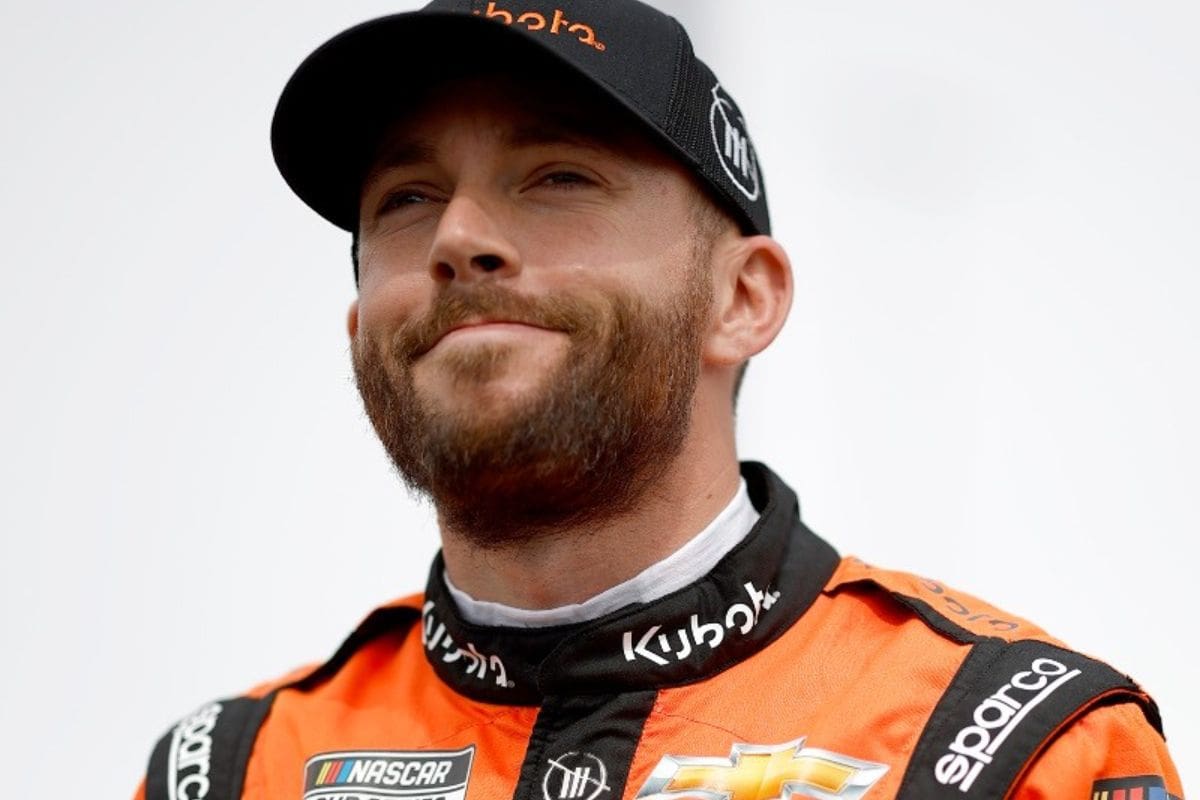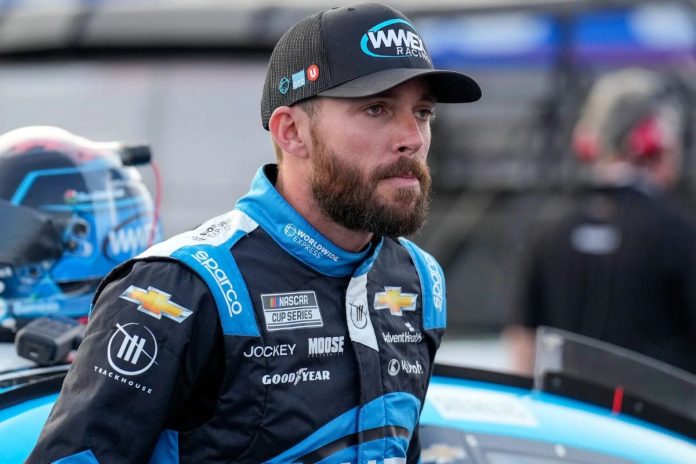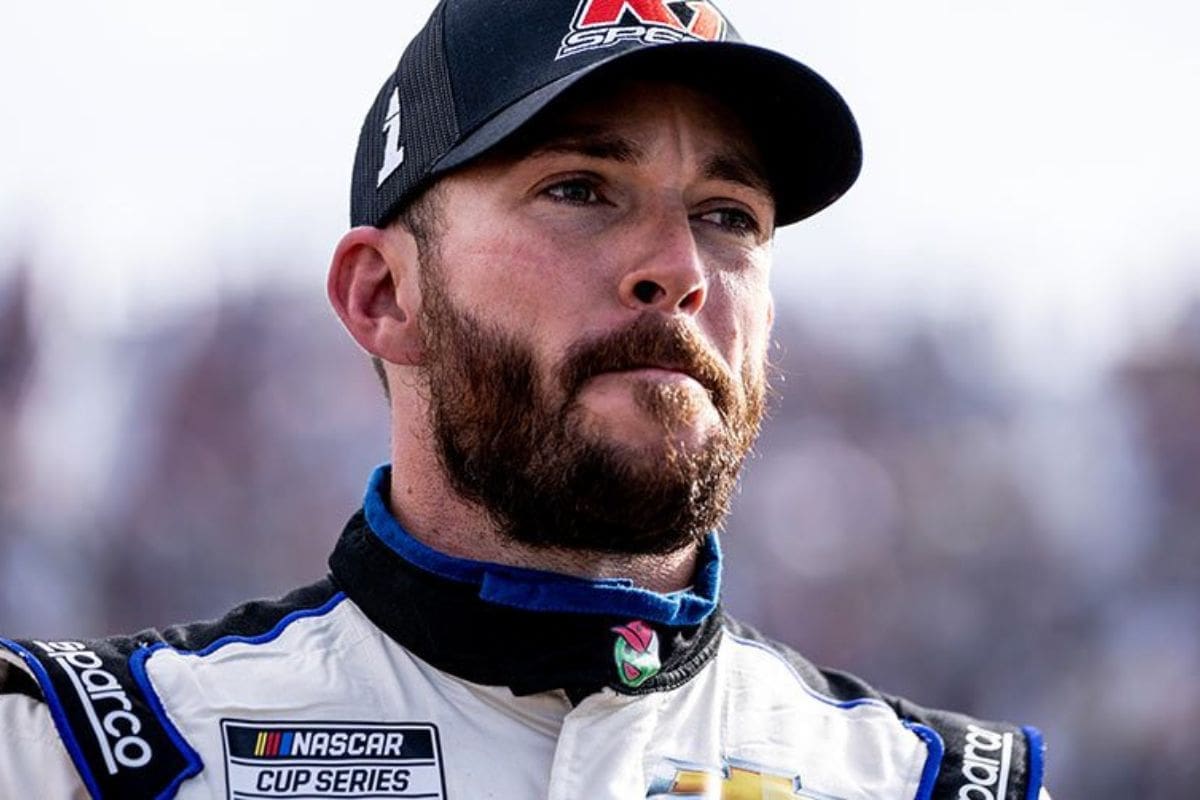Ross Chastain’s Texas Track Struggle: Ross Chastain’s performances at Texas Motor Speedway have shown a critical aspect of modern motorsports: the intricate dance of strategy and skill required for overtaking on a track known for its notorious single-groove dominance. The speedway’s design, favoring a particular racing line, presents a formidable challenge to drivers, emphasizing the importance of precision in qualifying and the strategic depth of pit stops. Chastain’s ability to celebrate passing tactics on such a circuit not only highlights his prowess but invites a broader discussion on the evolving dynamics of race strategy and driver adaptability. How does Chastain’s experience at Texas reflect the broader challenges facing drivers on single-groove tracks, and what could this imply for the future of racing strategy and competition?
Key Takeaways
- Texas Motor Speedway’s single-groove racing limits passing opportunities, posing a challenge for drivers like Chastain.
- Chastain’s celebrations of successful passes highlight the track’s overtaking difficulty.
- The track’s design, favoring a dominant racing line, restricts strategic overtaking maneuvers.
- Chastain’s best result at Texas, a runner-up finish, shows his adaptability despite passing challenges.
- Limited passing opportunities at Texas place a greater emphasis on qualifying and pit strategy for Chastain and other competitors.
Ross Chastain Highlights Passing Challenges at Texas Motor Speedway
Ross Chastain, the esteemed driver for Trackhouse Racing, has brought to light the formidable passing challenges that competitors face at Texas Motor Speedway. His insights provide an important perspective on what many consider a tactical battleground within the NASCAR Cup Series.
The intermediate oval, characterized by its 1.5-mile length, has become a focal point of controversy among the racing community, primarily due to its restrictive racing conditions that limit the opportunities for dynamic passing strategies.
The essence of Chastain’s critique lies in the inherent design and current condition of the track surface, which inherently favors a single, dominant racing line. This limitation not only curtails the spectacle of side-by-side racing but also places a disproportionate emphasis on qualifying performance and pit strategy, potentially sidelining the raw competitive nature that NASCAR prides itself on.

Chastain’s Celebration of Successful Passes
In NASCAR racing at Texas Motor Speedway, Chastain’s act of celebrating successful passes within the confines of his cockpit highlights the considerable challenge and strategic victory such actions represent. Overcoming the notorious difficulty of overtaking on this track, where the margin for error is very slim and the racing surface has yet to evolve to offer more passing lanes, requires not just skill but also a deep strategic acumen. Chastain’s celebration, then, is not just a moment of personal victory; it is an acknowledgment of mastering one of the circuit’s most demanding aspects.
“It is a huge market for us with a ton of opportunity. Racetrack-wise, we all wish we could do more there. I wish I could pass more. It truly is one of the hardest tracks to pass in my opinion. When I get a pass done, I sometimes physically celebrate in the car on the next straightaway because I did it and I did what I thought was impossible. Hopefully as it ages it opens up more and more, but we will see.”-(ROSS)
Chastain’s candid reflections on the difficulty of passing at Texas Motor Speedway emphasize a broader narrative within NASCAR about adaptability and the evolution of racing strategies. The fact that he looks forward to the track aging, with the anticipation that it will yield more opportunities for overtaking, reveals a clever understanding of motor racing dynamics. Tracks evolve, and with them, so must the strategies and skills of the drivers who compete.
Ross Chastain’s History at Texas Motor Speedway
Reflecting on Chastain’s celebrations of successful passes highlights the significance of his performance history at Texas Motor Speedway, where he clinched his best result in the previous season. Finishing as the runner-up behind William Byron in the fall playoff race marked a crucial moment in Chastain’s career, showcasing his potential and determination. This performance was his first and only top-10 finish on the mile-and-a-half oval, a track that has proven difficult for many seasoned drivers.
Analyzing Chastain’s journey at Texas Motor Speedway offers insights into his growth as a competitor. Texas is known for its high speeds and demanding conditions, requiring a blend of skill, strategy, and mental fortitude. Chastain’s ability to navigate these complexities, culminating in his impressive showing last season, speaks volumes about his development.
As fans and analysts look ahead to the upcoming AutoTrader EchoPark Automotive 400, there is keen interest in whether Chastain can build on his previous success. His history at Texas Motor Speedway, though highlighted by just one standout performance, provides a foundation of experience and confidence that could propel him to new heights.
Chastain’s Disinterest in Trackhouse Racing’s MotoGP Expansion
Despite Trackhouse Racing’s ambitious foray into MotoGP, Chastain’s recent statements reveal a clear disinterest in participating in the two-wheeled motorsport. During a press conference at Martinsville Speedway, Chastain articulated his stance with a firmness that left no room for ambiguity. He highlighted the high speed and the perceived lack of control associated with MotoGP bikes as significant barriers, contrasting sharply with the four-wheeled vehicles of NASCAR that he has mastered.
“No chance! Not even the second seat. I’ve seen Ben Kennedy was showing me some stuff. He’s ridden back seat with a guy. They did like, I mean they’re on one wheel on the straightaways going forward they’re on one wheel slowing down. Just no, not at all. It’s way too fast and I don’t like to be out of control. At least when I’m driving, I’m going to crash into something I get to hold the wheel.”-(chastain)
Chastain’s decision to steer clear of Trackhouse Racing’s MotoGP venture, which boasts talents like Miguel Oliveira and Raúl Fernández, emphasizes a practical approach to his career. His apprehension towards the radically different dynamics of motorcycle racing—emphasizing balance, lean angles, and a more intimate interaction with the machine’s physics—highlights a respect for the specialization required in motorsports.
News in Brief
Ross Chastain’s experiences at Texas Motor Speedway exemplify the subtle challenges drivers face on circuits that prioritize a single racing line, thereby complicating overtaking tactics.
His ability to celebrate successful passes not only highlights his adaptability and strategic prowess but also shows the broader dynamics of motorsports where track design plays a crucial role in shaping racing strategies and outcomes.
Chastain’s journey at this venue serves as a stirring reminder of the complexities inherent in professional racing, emphasizing the critical interplay between skill, strategy, and circuit configuration.
Our Reader’s Queries
Q. What track did Ross Chastain run the wall?
A. Chastain’s racing prowess suggests a trajectory that could land him in the Hall of Fame one day. While he has the potential to rack up multiple championships and countless victories, he’s acutely aware that the pivotal move he executed on the final lap of the Martinsville race will stand out above all else. It’s a simple truth that resonates with him, transcending the typical measures of success in the sport.
Q. Who does Ross Chastain drive for?
A. In the NASCAR Cup Series, he commands the #1 Camaro under the banner of Trackhouse Racing.
Q. How many people did Ross Chastain pass?
A. As Chastain approached the last corner at Martinsville Speedway, he made a gutsy decision to stay on the limit, breezing past five cars and shattering the track record in the process. With his car hugging the outside wall, he managed to snatch the final transfer spot from Denny Hamlin. This bold move sent shockwaves throughout the racing world and quickly went viral, garnering over 100 million views across various social media platforms.
ALSO READ: Ross Chastain and Josh Berry Analyze Sonoma Tire Test: What Did They Discover?




